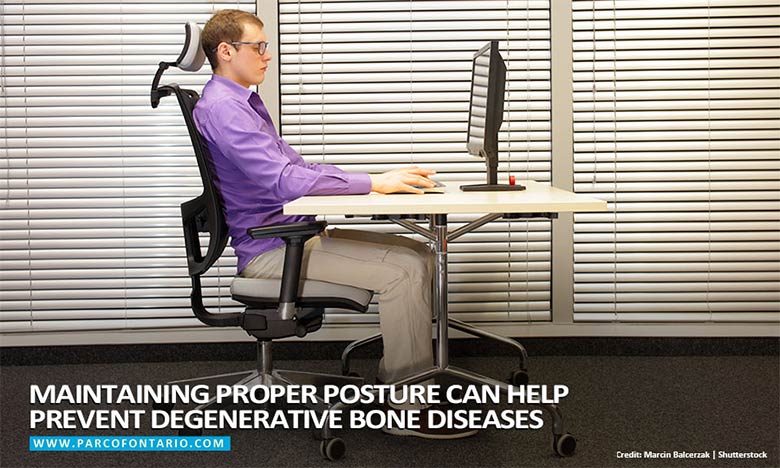How to Prevent Injury and Pain When Working From Home

Unfortunately, work-related injuries have become more pronounced during the COVID-19 pandemic. Contrary to popular belief, high-risk occupations like construction work are not the only causes of injury. Office work can harm the body as well. With more people working from home, people have adopted a more sedentary lifestyle leading to various musculoskeletal problems.
Recent data from Statistics Canada show that 40% of Canadians are now working from home. Though primarily due to the COVID-19 pandemic, this practice may remain even after the virus has been controlled. However, these decisions have raised concerns regarding the prevalence of work from home injuries.
If you’re working from home, you need to take extra steps to protect yourself from work-related injury and pain.
Problems When Working From Home

Even before the coronavirus did a number on modern lifestyle and practices, working from home was becoming more popular primarily because of digitization. Many believe that having a home-office setup is better than going to the office since you already have the necessities and comforts of home within your reach. However, it has its drawbacks in terms of health and safety.
Injury at home can be more severe than those acquired at a separate workplace. This is especially true if your home-office setup has the following problems:
- Inadequate equipment – Not all houses are equipped to handle daily office strain. You may not have the best table, chair, or ventilation for a proper desk space, which might cause physiological and psychological stress. Compared to a well-designed workspace, your home office may be cramped and ill-suited for you. An ill-suited station can cause fatigue, poor blood circulation, carpal tunnel, degenerative disk disease, reduced range of motion, nerve numbness, and muscle weakness.
- Sedentary lifestyle – Without a guided clockwork schedule, you might be oblivious to your lack of mobility. This physical movement deficit can cause injuries that can be invisible to the naked eye. Since they do not show any outward cuts and wounds, you will not notice them right away. Repetitive Strain Injuries (RSI) will heavily affect your musculoskeletal system, which is commonly observed on your neck, hands, wrists, shoulders, and back.
Injuries Related to a Work-From-Home Setup
Below are the most common injuries you can acquire by working from home:

- Migraines, caused by prolonged screen time and wrong monitor distance
- Broken extremities, caused by tripping and falling over carpets, floorboards, rails, and wires.
- Depression and anxiety, caused by a lack of social interaction and isolation from the outside world
- Back pain, caused by non-ergonomic chairs and desks, including improper posture
- Cuts and burns, caused by rushed home cooking and unnecessary multi-tasking between work and chores
Prevention Tips
Protect your health and safety by following these tips:
- Interior Design as First Aid

Since certain RSI injuries are related to your workspace setup, it makes sense to make a few alterations. Fortunately, you don’t need an all-out renovation of your home-office, you may need new furniture.
Consider the following:
-
- Desk – You need to have a desk that’s suited for your height and posture. It should fit your feet, knee, legs, and thighs comfortably. You can check this by making sure that your legs are not cramped, your knees should not hit anything, and your legs can extend in full range. The proper height for a desk is based on your elbow height. When sitting down, your keyboard and mouse should be on the same level as your elbows.
- Monitor – To avoid neck strains, your monitor should be slightly below your eye-level. When working, your eyes should look down on the screen without you having to bend your neck. You can adjust the monitor height by piling up books or adjusting your chair. The distance between you and the monitor should be as long as your arm. If you are working with a laptop, you can tilt back or tilt forward the monitor to reduce glare and increase visibility.
- Keyboard and mouse – When it comes to keyboard and mouse placement, elbows are still the standard. When typing, your wrist should remain straight while your arms are still in contact with your torso. You can roll up towels and place them below your wrists for support. You should also go for a straight keyboard rather than a tilted one for better hand placement.

A sedentary lifestyle is one of the main culprits of work-from-home-related injuries, like RSI. To combat sloth and muscle strain with your home-office setup, take time to exercise. Setting aside time for exercise is not a waste. It does not rob you of the time that you could have been spending typing reports. But it is an investment in your well-being.
Simply making time for a 30-minute walk around your living room or garden is already a big step. Combining that with stretches and yoga poses, you can battle the effects of staying in one position for extended periods.
If you do not have the space for dynamic movements, simply going up and down the stairs for at least 20 minutes can promote healthy blood circulation. Standing up for 30 minutes at a time can aid in back pain prevention as well.

While it may seem trivial, poor posture can significantly affect your physical health. Aligning your spine and bones properly can help in combating degenerative bone diseases. Proper back posture will prevent scoliosis, osteoporosis, and more. But, what is the proper posture?
Since you will spend most of your time sitting down, you need to sit properly.. Whatever the chair you use, it must be capable of supporting your spine. Your feet should lay flat on the floor, with your thighs parallel to the floor. Your back should touch the chair while your neck should be straight. Standing up and changing positions every 45 minutes is also advised.
Adjusting to the pandemic is difficult. Having your social life, workspace, and habits thrown into a spiral can be mentally and physically straining. Adjusting to a healthy lifestyle in the new normal may not seem possible at first, but you need to do so to maintain your overall well-being.
When it comes to work-from-home injuries, the best way to prevent injury is self-care. Thinking of your health and prioritizing yourself is not selfish, it is part of being a healthy individual. Focusing on your work is good, but you should also look out for yourself.
If you’re experiencing muscle pain or chronic migraines caused by working from home or a sedentary lifestyle, you can find relief through physiotherapy. Reach out to The Physiotherapy and Rehabilitation Centres (PARC) of Ontario offers physiotherapy services and other services, including work site assessment.
Call us today and book an appointment at a clinic nearest you:
- Ajax Rehabilitation Centre (905) 686-9081
- Mississauga Active Physiotherapy Services (905) 897-2092
- Oshawa Physiotherapy and Rehabilitation Centre (905) 579-9938
- Scarborough South Physio and Rehab Centre (647) 352-1100
- Scarborough Physiotherapy and Rehabilitation Centre (416) 430-0314
- Whitby Physiotherapy & Rehabilitation Centre (905) 430-2112









